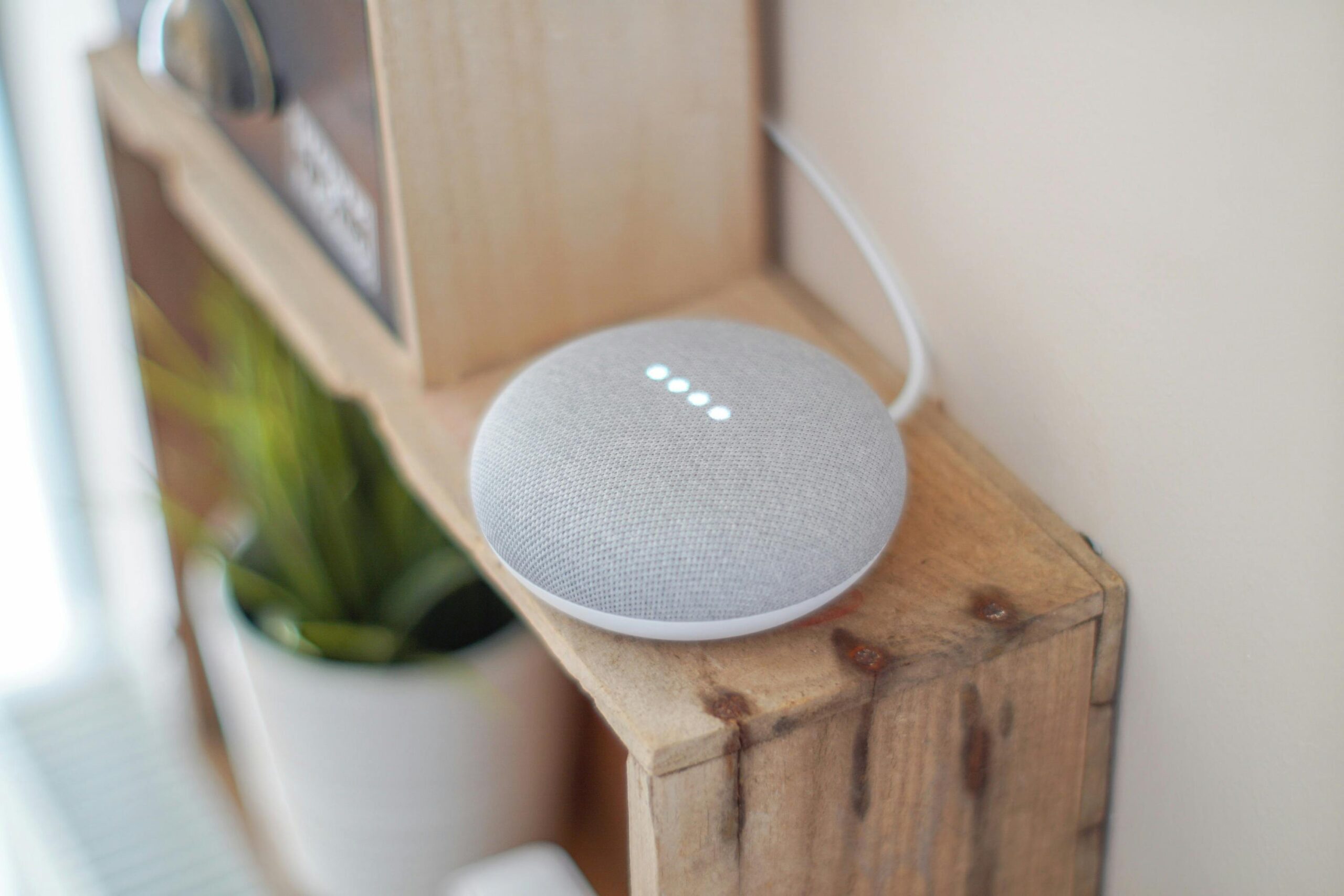Smart Home Technology: Lifetime Costings for Accommodation Claims
Tom Docker explains the growing importance of smart home technology in serious injury claims.

Beyond Bricks and Mortar
As a Chartered Surveyor and accredited Accommodation Expert Witness, my fundamental role is to provide the Court with a full, fair, and impartial evaluation of a injured person’s reasonable housing needs.
The goal has always been consistent: to design inclusive, enabling environments. However, the tools at our disposal for achieving this have transformed, and are transforming, at a rapid rate. The conversation is no longer confined to the physical structure of a property. Today, it must include a diligent consideration of the technological ecosystem within it.
In this article, I provide my expert perspective on how a correctly specified, needs-led investment in smart home technology has become an important tool in modern personal injury and clinical negligence litigation.
The Correct Approach: A Shift in Financial Perspective
In my extensive experience providing expert witness services for claimants and defendants, the inclusion of environment controls can often become a point of contention. To view this technology as a luxury is to fundamentally misinterpret its purpose and financial impact. The correct and pragmatic approach, and the one which I consistently advocate in my professional practice, is to assess the capital cost of an integrated technology system as a direct investment weighted against future, recurring revenue expenditure.
The core of my advice to the Court is always build upon an impartial cost benefit analysis. I weigh the required capital expenditure to purchase and install an appropriate, robust system against the clearly projected lifetime savings in areas like paid care. In almost all catastrophic injury cases, the financial analysis is clear. The upfront investment is significantly outweighed by the consequent reduction in annual costs. This presents a compelling and wholly justifiable case to the Court, demonstrating sound financial management that serves the long term interest of all parties by reducing the overall quantum of the claim.
Quantifying the Financial Sum of Technology
To assist the Court, my analysis focuses on justifying smart technology through its ability to generate tangible savings across multiple heads of claim. This “technology dividend” is a critical component of any modern claim.
Direct and Substantial Reduction in Care Costs:
This remains the most significant and readily calculable area of saving. Every single task that technology enables a client to perform independently is a task for which a paid carer is no longer required.
- Access and Security: An automated door and intercom system, controllable from a wheelchair or bedside, removes the need for a carer to be constantly available to admit visitors, family, or accept deliveries. Over a lifetime, the accumulation of these saved hours represents a substantial and undeniable financial saving.
- Sensory Impairment: In a recent case involving a profoundly deaf client, an integrated system providing distinct visual alerts for doorbells, smoke alarms, and telephones via smart lighting entirely negated the need for a carer’s presence in the immediate. This not only supports independence but can also deliver a reduced cost over a lifetime.
Proactive Safety and Risk Mitigation:
A crucial part of my duty as an accommodation expert witness is to consider how intelligent design can proactively mitigate future risks and their associated costs.
- Fall Prevention: Automated, motion sensitive lighting in hallways and bathrooms is a simple but highly effective measure to reduce the risk of falls during nighttime transfers. A fall can lead to a hospital admission and subsequent, often permanent, increases in a care package. Technology is a powerful preventative tool.
- Emergency Alerts: Integrated admin and monitoring systems provide immediate alerts to a designated carer or monitoring service in an emergency. This ensures a faster response that can mitigate the severity and long-term cost of an adverse medical event. The value of this proactive approach is supported by wider evidence from the case sector. For example, studies have shown an 11% reduction in emergency department attendance, 25% reduction in emergency admissions, and 11% shorter hospital stays through the use of smart technology in care settings. This data powerfully illustrates the direct correlation between investment in technology and the reduction of acute medical costs.
Future Proofing as a Financial Imperative
When specifying a solution for a client’s lifetime, it is important to consider the evolution of technology. A key part of my professional advice centres on future proofing the installation. This does not mean installing every new gadget, but instead focuses on specifying a robust, reliable, and centrally wired core system that is adaptable and scalable. This ensures that as technology evolves and a client’s needs change, new devices and functions can be added without the need for a disruptive and prohibitively expensive system overhaul. This approach is fundamental to ensuring the initial investment continues to deliver value and savings throughout the lifetime of the client, representing true long-term financial prudence.
This is not a niche consideration. The adoption of this technology reflects a significant societal shift, with approximately 50% of UK households now having integrated smart technology. The UK disabled and elderly assistive device market, valued at £1.16 billion, is projected to reach £2.81 billion by 2023, demonstrating the escalating importance and integration of these solutions into daily life. This growth is mirrored in falling costs, an important factor for the Court to consider. Indeed, guidance also specifically recognises that assistive technology systems previously costing several thousand pounds can now be achieved for under £300, reinforcing the cost-effectiveness of a future proofed approach.
To achieve this, core technical protocols like Z-Wave and Zigbee for compatibility ensure wide compatibility and interoperability between devices from difference manufacturers. This prevents a client from being locked into a single, proprietary system. Specifying modular systems allows for straightforward expansion without significant reconfiguration, and ensuring core components are 5G-compatible prepares the installation for future connectivity, especially for advanced automation involving security cameras and next generation AI-powered assistants.
The Role of Specialist Expertise
The successful inclusion of smart home technology within a claim is wholly dependent on the quality, detail, and clarity of expert evidence. The specification process is complex and requires a deep, practical understanding of not only the technology required, but of the specific needs of the individual and how the accommodation must be adaptable to meet them.
My primary responsibilities in this process are:
To Provide a Genuinely Needs-Led Specification:
Technology recommended for use within an adapted property must be explicitly and demonstrably linked to the functional challenges arising directly from the client’s injuries. This solution is bespoke, not a list of desirable consumer electronics. It is my role to ensure that the entire property is robust enough for the demands of a care environment.
To Deliver a Strong and Defensible Cost Benefit Analysis:
My analysis must always articulate the financial case for all property adaptation requirements, including technology. The legal framework for this is clear.
Following the Court of Appeal’s decision in Swift v Carpenter, accommodation claims for claimants with a longer life expectancy are now calculated using the additional capital costs minus the reversionary interest, typically applying a 5% discount rate. This formula means that after approximately 14.5 years, claimants begin to recover 50% of the capital costs. My analysis therefore focuses on demonstrating a return on the claimant’s investment, showing how the capital outlay on technology is offset by long-term savings.
We must also consider all funding avenues. Disabled Facilities Grant (DFG) funding, which can provide up to £30,000 in England and £36,000 in Wales, can often be utilised to cover the capital costs and installation of smart home technology, though not the ongoing maintenance or service fees. My role is to provide the clear justification needed to access such funding, further strengthening the financial case for the required adaptations.
A New Standard of Care
From my professional standpoint, the integration of smart home technology is no longer an auxiliary point or a forward-looking concept in accommodation claims. It is a fundamental component of a modern, financially prudent, and enabling solution.
For litigators, deputies, and case managers, ensuring the inclusion of smart technology is supported by impartial, practical, and sound expert evidence is now a key factor in delivering the best possible outcome for the client. A strategic investment in technology may reduce the lifelong cost of care, it enhances safety, it promotes dignity and independence, and ultimately provides a compelling, evidence-based case for reducing the quantum of a claim through demonstrable and significant lifetime revenue savings.
To see how Steven Docker Associates implemented these principles in a real-world setting, explore our new case study on designing a forever home for a profoundly deaf client.

